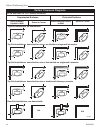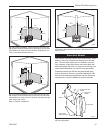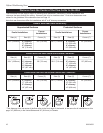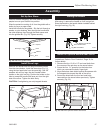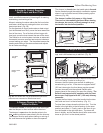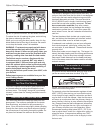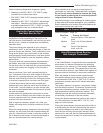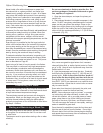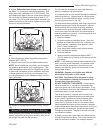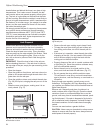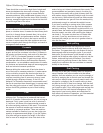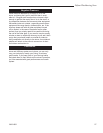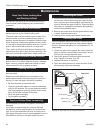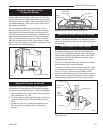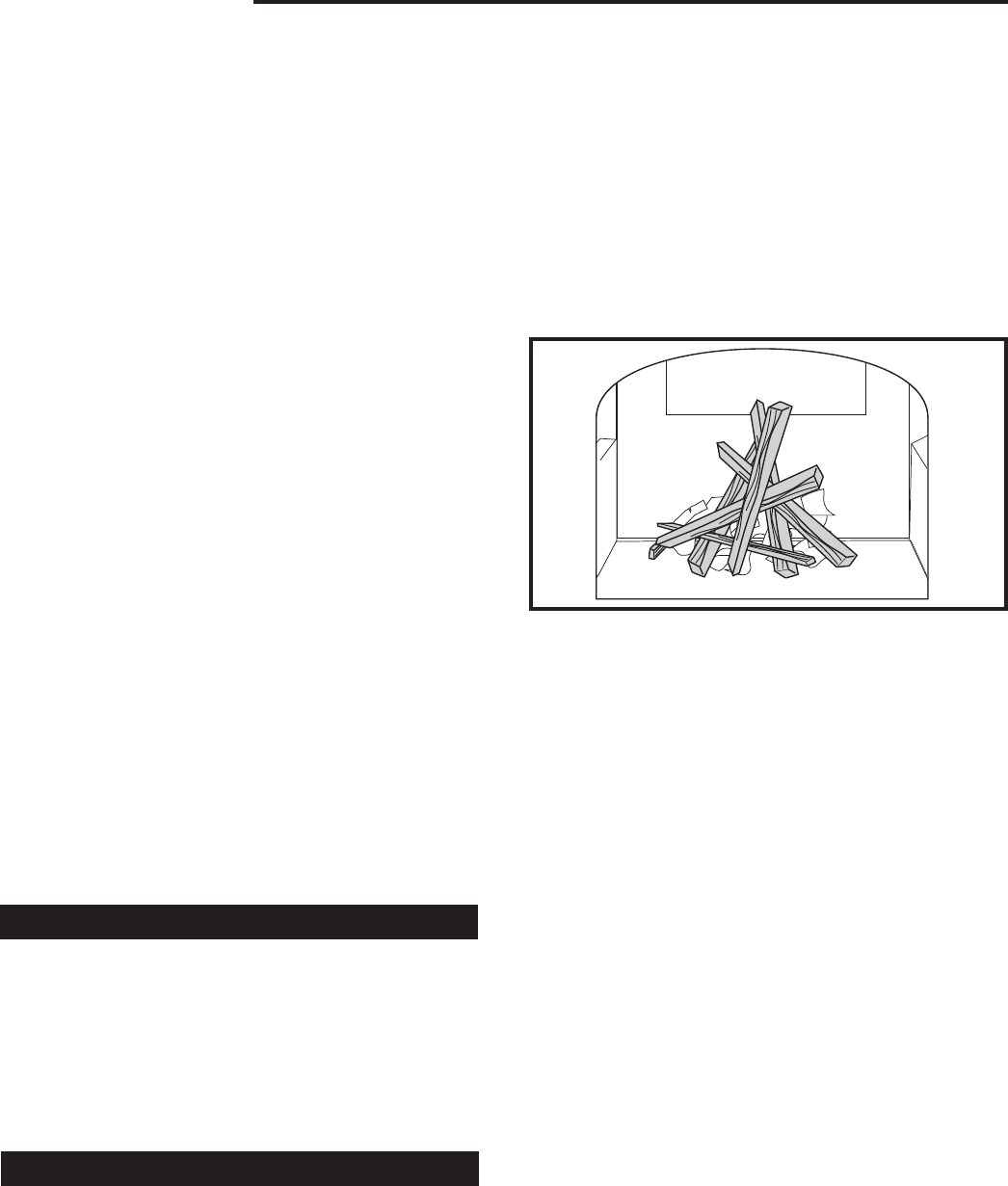
22
Defiant Woodburning Stove
30001693
Never kindle a fire with colored paper or paper that
has colored ink or a glossy surface, and never burn
treated wood, garbage, solvents, or trash. All of these
may poison the catalyst and prevent it from operating
properly. Never burn cardboard or loose paper except
for kindling purposes. Never burn coal; doing so can
produce soot or large flakes of char or fly ash that can
coat the combustor and cause smoke to spill into the
room. Coal smoke also can poison the catalyst so that it
won’t operate properly.
In general, the fire must be sufficiently well-established
to ensure that catalytic activity is initiated. When first
starting a fire, a medium- to high- firing rate must be
maintained until the stove, catalyst, and fuel are all
stabilized at the proper operating temperatures, and the
chimney is warmed.
Even though it is possible for the fire to get quite hot
within a few minutes after a fire is started, the combus
-
tor may stop working or the fire may go out if the fire
dies down immediately as a result of the damper being
closed. Once the combustor starts working, heat gener-
ated by burning the smoke will keep it working.
To determine whether the combustor is operating, ob-
serve the amount of smoke leaving the chimney when
the damper is activated and when it is not. This proce-
dure is described on Page 30.
Avoid using a full load of very dry wood in the firebox.
This may result in continuous very high temperatures
in the secondary combustion area and damage the
combustor. Wood which has been split, and stored un-
der cover for more than 18 months may be considered
very dry. If you must burn extra-dry wood, mix it with
greener wood for a longer fire and less stress on the
combustor. Also, do not use a full load of dry slab wood
or scrap wood. For long burns, use a mix of dry and
moderately dry wood.
Conditioning Your Stove
Cast iron is extremely strong, but it can be broken with
a sharp blow from a hammer or from the thermal shock
of rapid and extreme temperature change.
The cast plates expand and contract with changes in
temperature. When you first begin using your Defiant,
minimize thermal stress by letting the plates adjust
gradually during three or four initial break-in fires follow-
ing Steps 1-3 below.
Starting and Maintaining a Wood Fire
Burn only solid wood in the Defiant, and burn it directly
on the grate. Do not elevate the fuel. Do not burn coal
or other fuels.
The damper must be open when starting a fire or when
refueling.
Do not use chemicals or fluids to start the fire. Do
not burn garbage or flammable fluids such as gaso-
line, naphtha, or engine oil.
1. Open the stove damper, and open the primary air
control fully.
2. Place several sheets of crumpled newspaper in the
stove. Do NOT use glossy advertisements or colored
paper, as they can poison the catalyst. Place on the
paper six or eight pieces of dry kindling split to a finger-
width size, and on the kindling lay two or three larger
sticks of split dry wood approximately 1-2” (25-50 mm)
in diameter. (Fig. 33)
ST263
starting a fire
12/99
ST263
Fig. 33 Start the fire with newspaper and dry kindling.
Also, never use gasoline-type lantern fuel, kerosene,
charcoal lighter fluid, or similar liquids to start or “fresh-
en up” a fire. Keep all such liquids well away from the
Defiant while it is in use.
3. Light the newspaper and close the door. Gradually
build up the fire by adding a few 3-5” (80-120 mm) di-
ameter splits. If this is one of the first few “break-in”
fires, let the fire burn brightly, and then let it die out.
During the break-in fires, do not let the stove get hotter
than 500°F. (260°C) as measured on an optional stove-
top thermometer. Adjust the air control lever as neces-
sary to control the fire.
Some odor from the stove’s hot metal, the paint, and
the cement is normal for the first few fires.
NOTE: Some chimneys must be “primed,” or warmed
up, before they will draw sufficiently to start a fire. To
correct this situation, roll up a couple pieces of news-
paper, place them on top of the kindling and toward
the back of the stove, light them, and close the doors.
This will encourage the smoke to rise rapidly, making it
easier to establish a good draft.
Once the draft is established, open the front door and
light the rest of the fuel from the bottom. Do not light
the main bed of fuel until the chimney begins drawing,
and repeat the procedure as often as necessary if the
initial attempt is unsuccessful.



